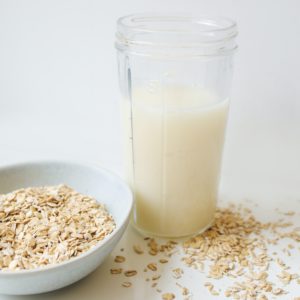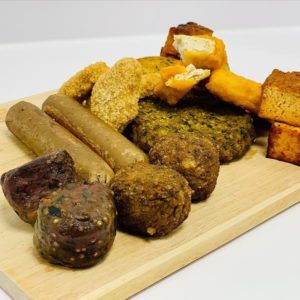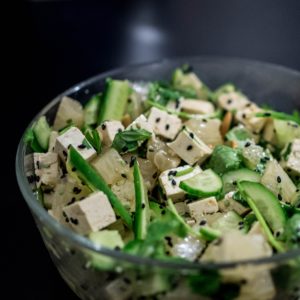Supermarkets now have a wide range of ‘alternative products’ for consumers who want to reduce or avoid animal-based foods. These alternative products usually do not contain meat, egg, or dairy.
But what kinds of products exactly do we mean when we talk about alternative products?

Dairy alternatives
Dairy alternatives include plant-based ingredients for milk, yoghurt, cheese, sour cream, etc.
Consumers often use terms like ‘nut milk’ or ‘coconut yoghurt’. We also find them on product packages. However, these terms are not technically correct. In fact, to avoid confusion, it is currently debated in many countries whether plant-based drinks are allowed to use terms like ‘milk’ on their packaging.
Dairy alternatives have a very different nutritional composition: e.g., plant-based dairy alternatives often have a much lower protein content than conventional dairy products.

Novel alternatives
Novel alternatives like
- seaweed,
- algae (spirulina and chlorella),
- and insects
are mostly used as a meal ingredient. An exception could be roasted seaweed as a snack.
These alternative products may not be novel at all for some non-Western cultures. However, they are not similar to any other product typically used as part of a Western diet. They would therefore suit consumers who are not afraid to try something new.

Within the FFC programme, we are working on developing products with Karengo, a native seaweed. We will include these products in future consumer testing studies. Further research around Karengo’s nutritional value is the focus of another Catalyst Programme (through the Cawthron Institute).
Meat alternatives
This is the most diverse category, and it is the one our programme focuses on.
Traditional meat substitutes include classic vegetarian products, legumes, or nuts – such as veggie burgers, chickpeas, or tofu. These products do not aim to imitate meat. Their preparation is often different from the way that meat is prepared, which may be a barrier for consumers that do not usually consume such products.
Plant-based meat analogues aim to imitate meat but are made from plants. These products may be of interest to those who choose to avoid or reduce meat consumption but still desire meat-like products. As these products are prepared/used just as conventional meat, plant-based meat analogues may help with a transition from a meat-based to a more plant-based diet.
Meat-eating consumers often do not like these products as much as ‘real’ meat, e.g., because the flavour or texture does not compare. This may be a barrier to repeated consumption.

In the FFC programme, we aim to determine which sensory attributes the consumer values in these products.
Cell-cultured meat is a potential future alternative to the meat products we consume today. It is made by growing meat from animal cells (e.g., salmon, cow or duck) in a laboratory by feeding them with nutrients. Because cell-cultured meat is made from animal cells, its composition is identical to meat – it is not a plant-based product.
Cell-cultured meat looks, cooks, and tastes very similar to animal meat. It may therefore be more appealing than plant-based meat analogues to consumers who desire an animal-based diet.

Cell-cultured meat is currently not available in Aotearoa New Zealand. If/when it is, its success will depend on consumer demand. The FFC programme is conducting studies to measure current consumer perception of cell-cultured meat. This will help to determine whether there is a future market for this alternative protein. For these studies on cell-cultured meat, we collaborate with researchers from the University of Auckland and the University of Canterbury, who are part of another Catalyst Programme within the MBIE Future Foods Platform.
Caroline Giezenaar, 23 November 2021


Cell-cultured meat is a potential future alternative to the meat products we consume today.